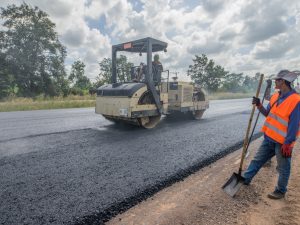
2021 was another year of trials for many industries, and the construction industry was no exception. Rising material costs, labor shortages, and increased demand all had major impacts on construction across the nation.
Rising Building Material Costs
According to a November 2021 report from the National Association of Home Builders (NHAB), building material prices on average increased 12.2% year-to-date after increasing 4.5% over the same period in 2020. Many materials are still on an upward trend in regards to price. Ready-mix concrete products, gypsum products, steel mill products, goods used in residential maintenance and repair, millwork, prepared asphalt, tar-based roofing products, and construction materials have all seen another year of rising prices. Softwood lumber prices were some of the only costs to see a dramatic drop, which occurred in May of 2021.
Skilled Labor Shortages
In the wake of the pandemic, many industries faced a labor shortage. However, the construction industry was hit especially hard during 2021. Many construction companies were having challenges finding skilled workers prior to the 2019 onset of the pandemic, and the issue has only been exacerbated by the events of the past two years.
The construction sector lost more than one million jobs in the spring of 2019. Since then, construction job openings have increased by 12% from pre-pandemic levels, and the sector is still down about 232,000 jobs from February 2020 according to data from the Bureau of Labor Statistics.
The 2021 unemployment rate in the construction industry peaked in February at 9.6%, falling to a 2-year low of 4.0% in August.
Increased Construction Demand
2021 saw a surge in activity throughout the construction industry. Many projects that had been put on hold due to the uncertainty of the pandemic were finally completed over the past year, specifically in the residential sector.
In fact, the residential sector has been the biggest driver of the construction industry’s growth over the past several quarters. Lower interest rates and a large shift towards creating a more enjoyable living space have increased the demand for homes across the country.
In addition, many sectors worked to reconfigure supply chains that were drastically impacted by the pandemic. As backlogs were relieved and materials became more readily available, companies were able to take on a greater number of projects.
Looking Ahead for 2022
The construction industry saw significant growth in 2021, and 2022 is shaping up to be even bigger. With the enactment of the Infrastructure Investment and Jobs Act, the industry is expecting to see another large surge in demand, specifically in paving, aggregates, and other infrastructure-related sectors.






